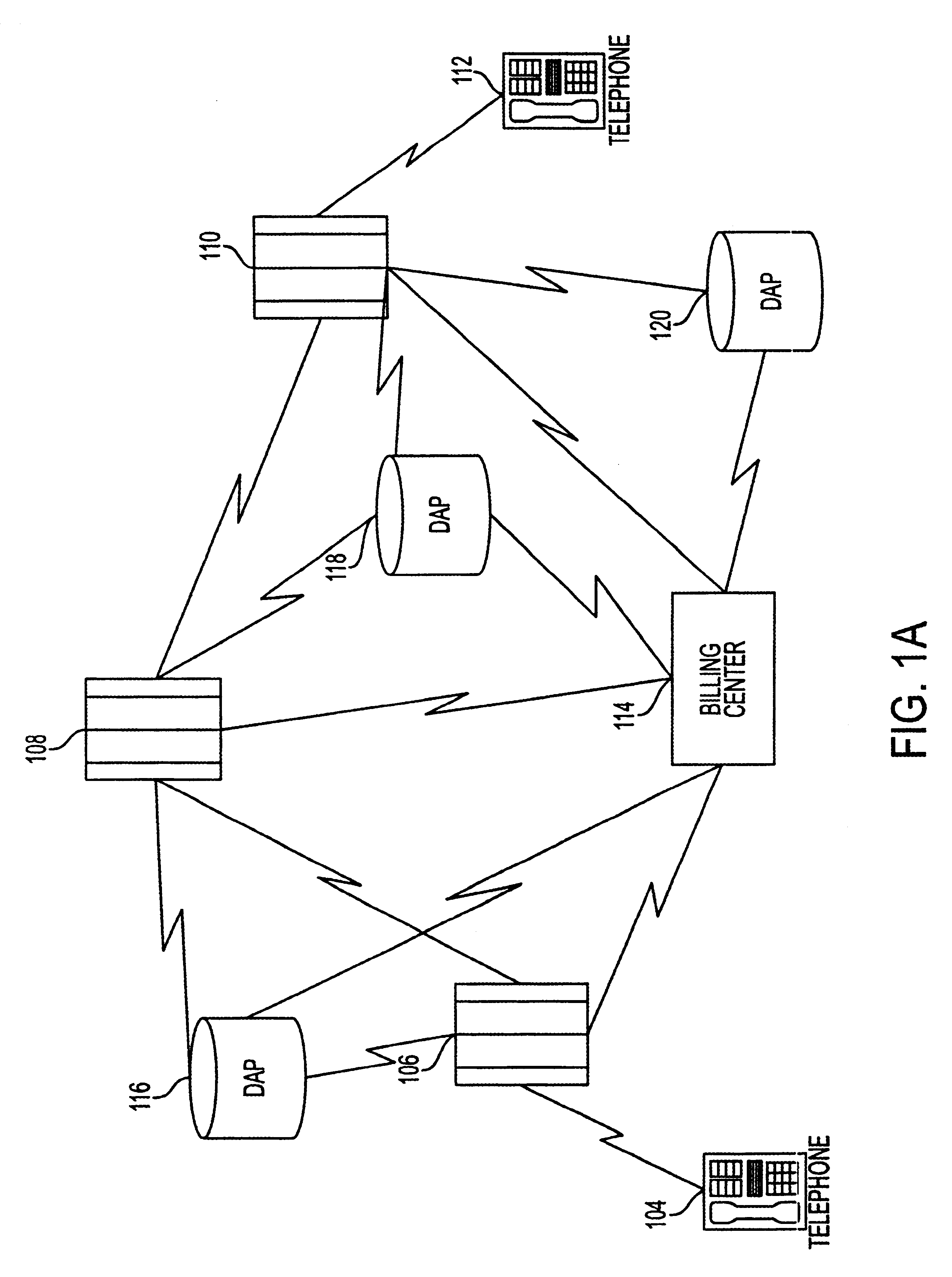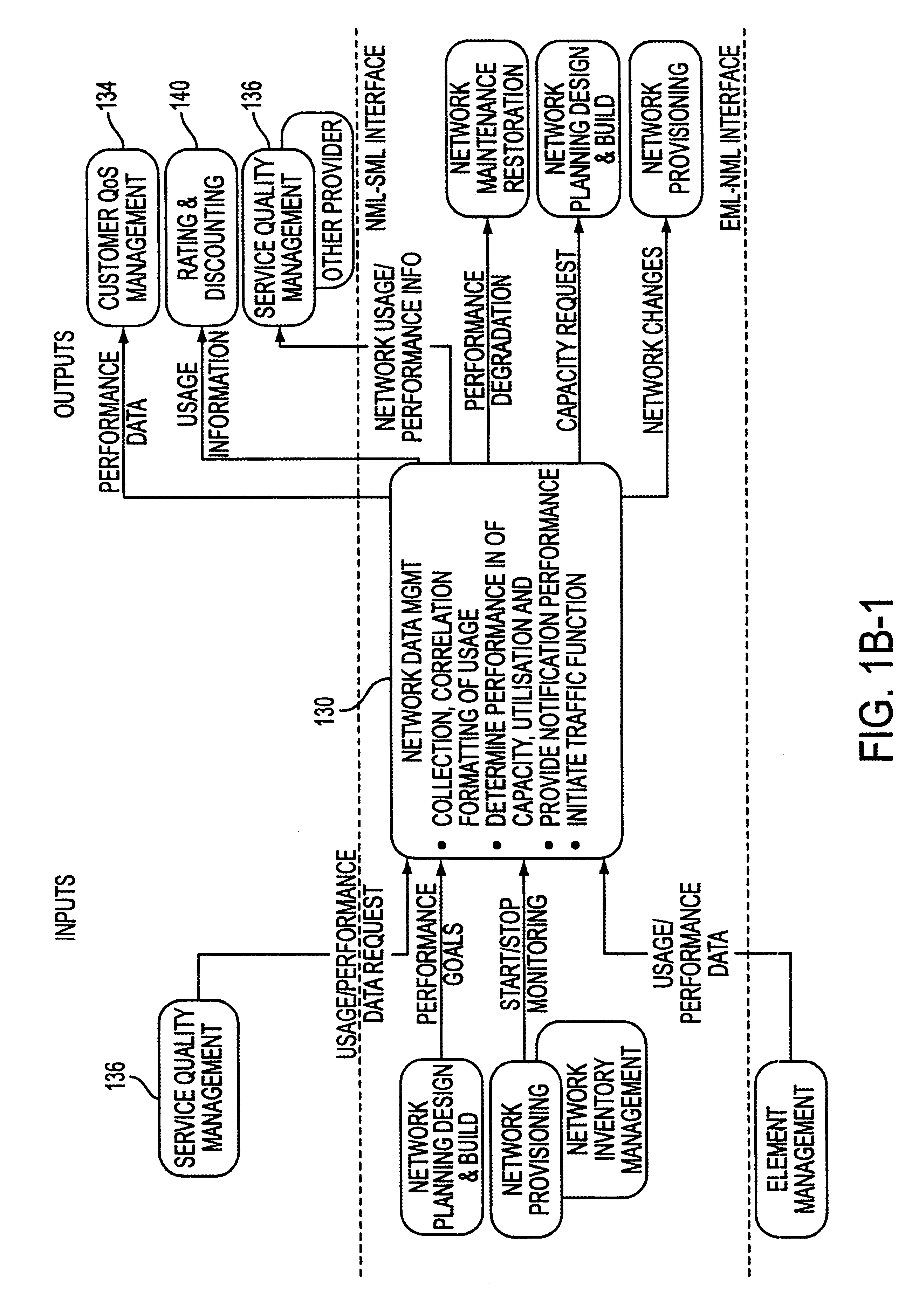System, method and article of manufacture for demonstrating E-commerce capabilities via a simulation on a network
a technology of e-commerce and simulation, applied in the field of system, method and article of manufacture for demonstrating e-commerce capabilities via simulation on a network, can solve the problems of affecting the performance of the network, etc., and achieves the economic unrealisticity of providing the processing power required by a packet switch interconnecting a group of networks for the performance level desired
- Summary
- Abstract
- Description
- Claims
- Application Information
AI Technical Summary
Problems solved by technology
Method used
Image
Examples
process example
Network Data Management Process Example
FIG. 46 illustrates a Process flow for Network Data Management. This example assumes that a new service has been provisioned and has triggered Network Data Management to start its function. Further, it shows that Network Data Management has discovered an out-of-spec condition and has notified the Service Problem Resolution process.
Although each sub-process has many triggers and data flows, in the previous examples, only those triggers and data flows pertinent to the high level process are shown. A more detailed view of inputs, outputs and responsibilities of three of the sub-processes will now be set forth.
Performance Monitoring and Analysis Sub-process
FIG. 47 shows the Network Performance Monitoring sub-process. (Managing / Servicing individual NLA's with the Service Management Layer) This sub-process is responsible for managing, processing and analyzing network and NE statistical information, to determine and track network performance, providin...
PUM
 Login to View More
Login to View More Abstract
Description
Claims
Application Information
 Login to View More
Login to View More - R&D
- Intellectual Property
- Life Sciences
- Materials
- Tech Scout
- Unparalleled Data Quality
- Higher Quality Content
- 60% Fewer Hallucinations
Browse by: Latest US Patents, China's latest patents, Technical Efficacy Thesaurus, Application Domain, Technology Topic, Popular Technical Reports.
© 2025 PatSnap. All rights reserved.Legal|Privacy policy|Modern Slavery Act Transparency Statement|Sitemap|About US| Contact US: help@patsnap.com



